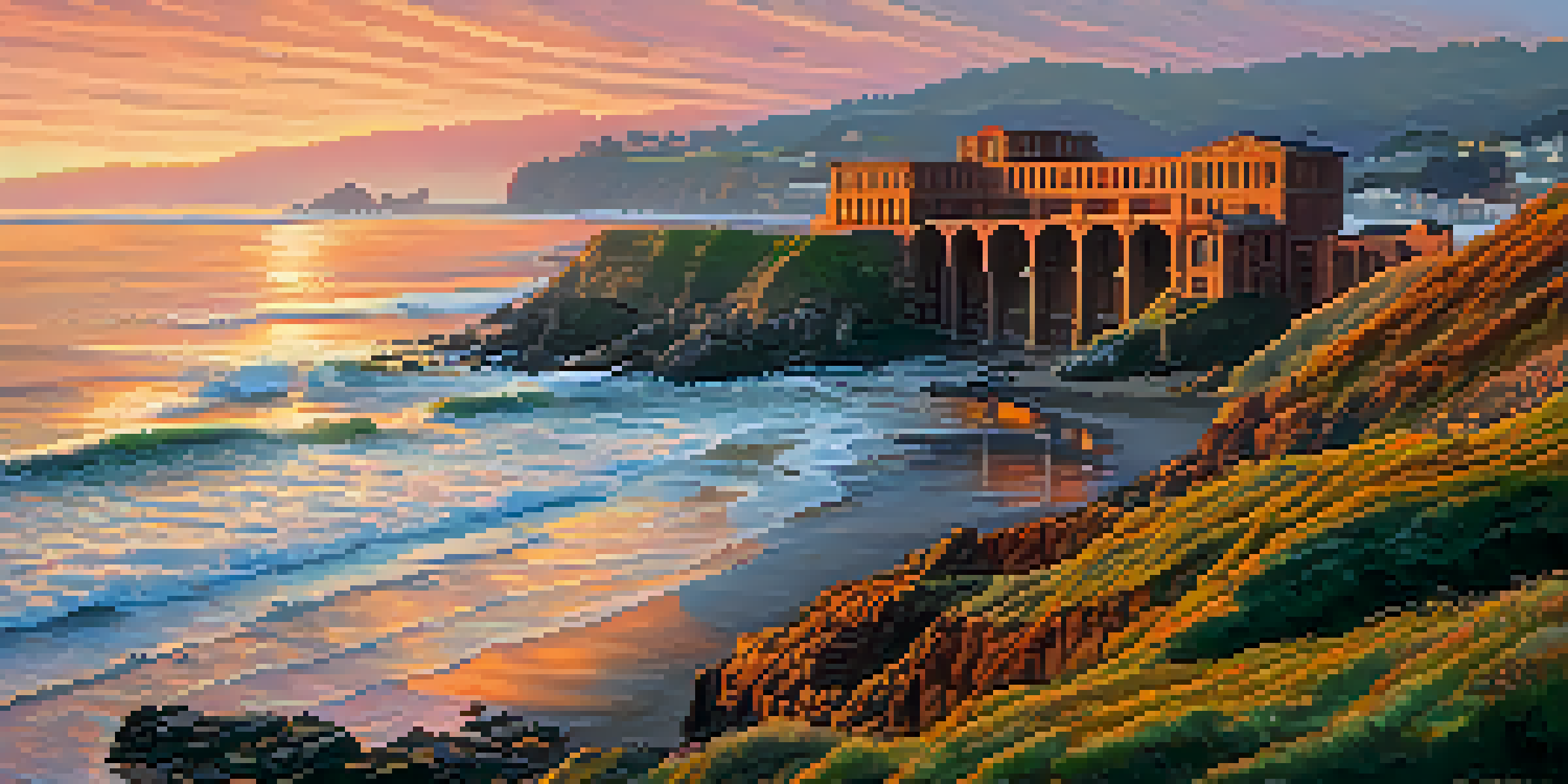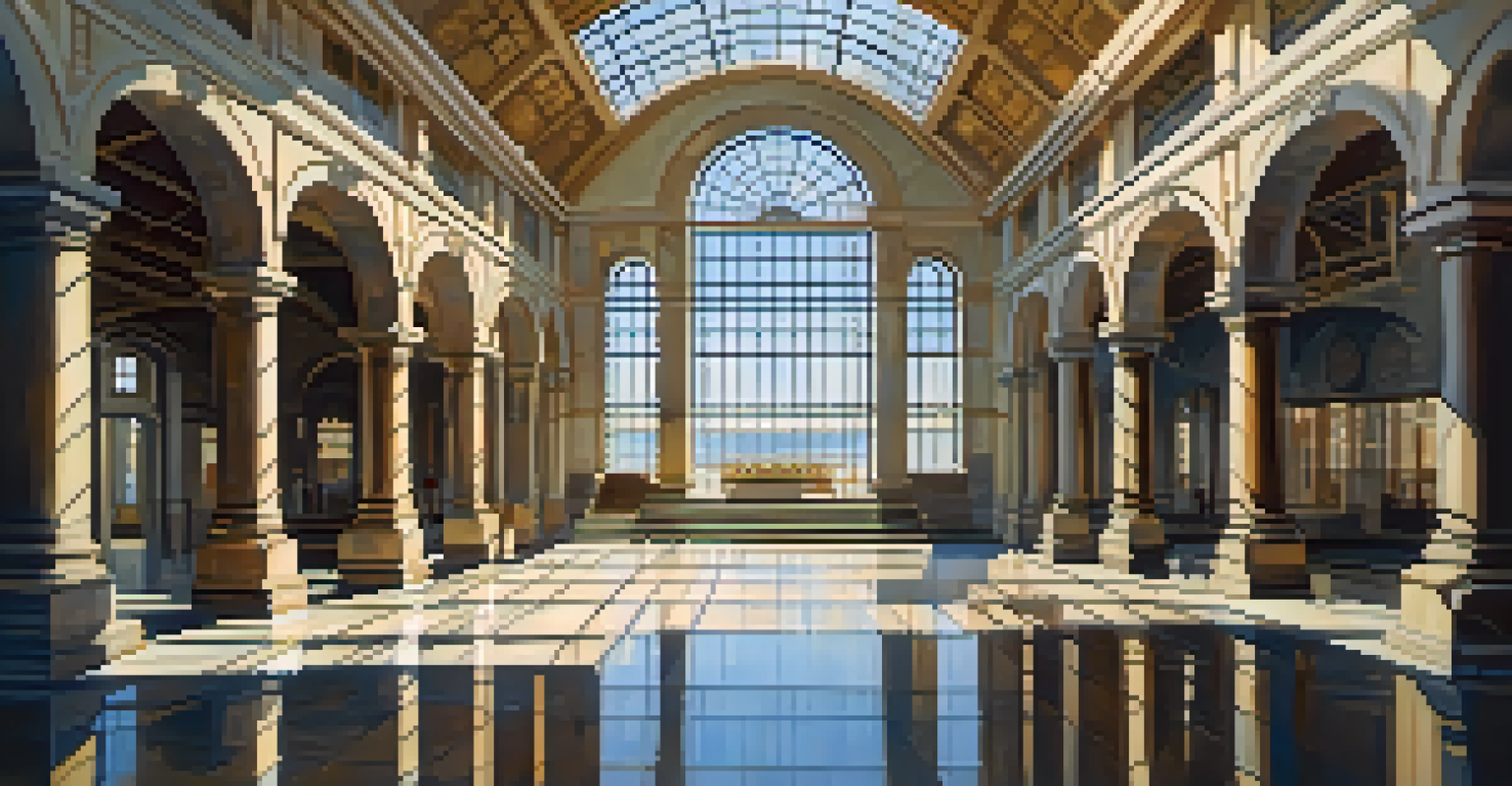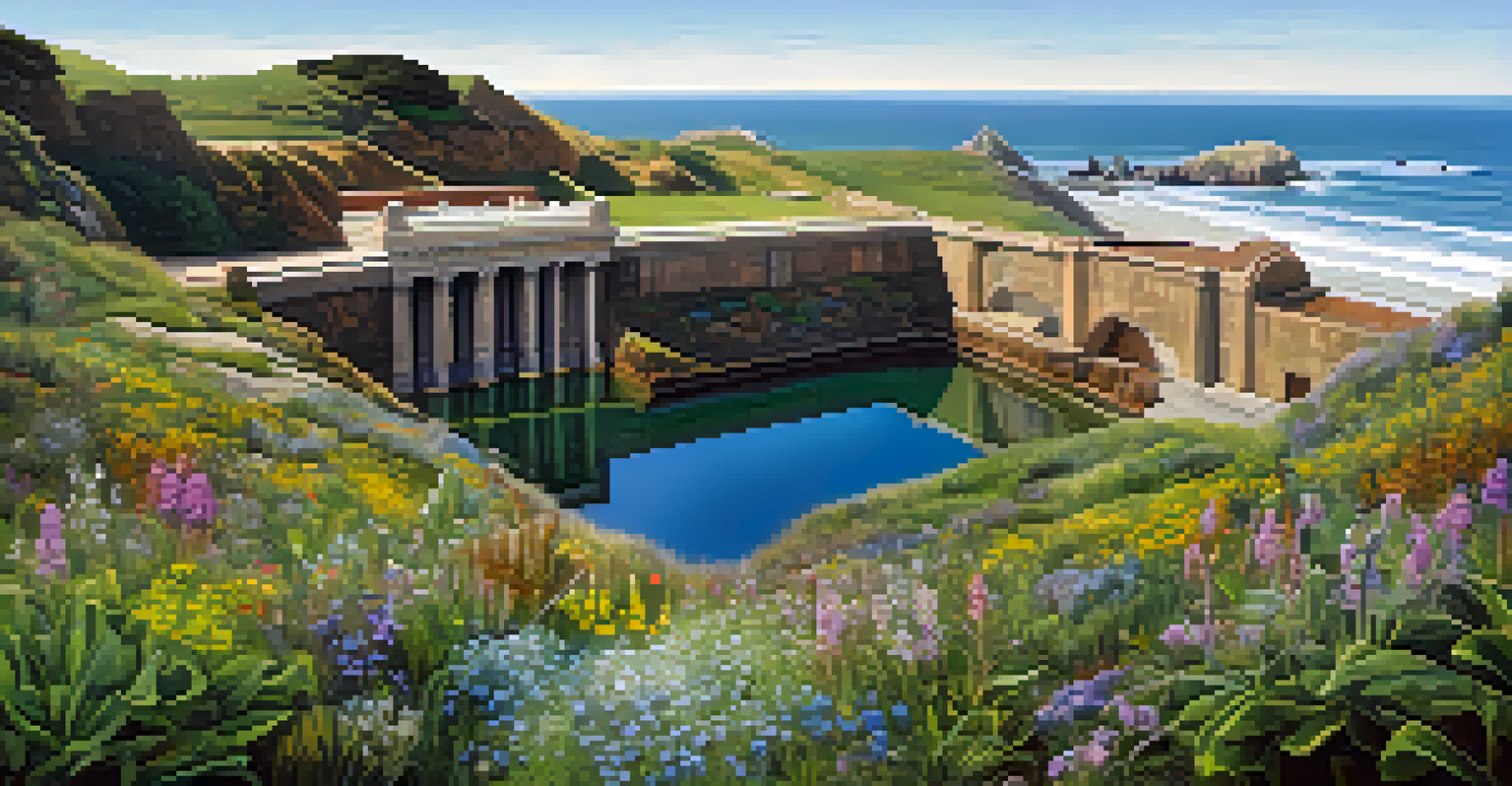The Sutro Baths: Remnants of San Francisco's Bathing Culture

The Origins of the Sutro Baths in Late 19th Century
The Sutro Baths were built in 1896 by Adolph Sutro, a visionary who sought to provide a public bathing experience in San Francisco. He envisioned a grand structure that would serve as a recreational haven for the city's residents, combining the benefits of bathing with the beauty of the coastline. Located near the Pacific Ocean, the baths were designed to offer breathtaking views, making it a popular destination.
The past is never dead. It's not even past.
The complex was remarkable for its time, featuring six saltwater pools that were heated and filled with water from the ocean. Visitors could enjoy a range of activities, from swimming to sunbathing, all within an architecturally stunning environment. The baths quickly became a social hub, attracting locals and tourists alike, eager to experience Sutro's innovative vision.
As the baths flourished, they reflected the growing interest in public health and wellness during the late 19th century. The concept of bathing as a leisure activity was relatively new, and Sutro's Baths provided a unique setting where people could relax and rejuvenate. This early embrace of recreational bathing set the stage for future trends in wellness culture.
Architectural Marvel: Design and Features of the Baths
The Sutro Baths were not just about swimming; they were a stunning architectural feat. Designed by the prominent architect, Charles D. Smith, the structure combined elements of Roman baths and contemporary design. The use of glass and steel allowed natural light to flood the space, creating a warm and inviting atmosphere for visitors.

Inside, the baths featured a grand entrance hall, changing rooms, and even a museum showcasing Sutro's personal collection of artifacts. The main room, filled with multiple pools, was an impressive sight, with the sound of water echoing throughout. This environment encouraged social interaction, as friends and families gathered to enjoy their time together.
Sutro Baths: A Historic Gem
Built in 1896, the Sutro Baths became a popular public bathing destination, reflecting late 19th-century wellness trends.
The baths also included a seawater filtration system, ensuring the water was clean and safe for bathers. This innovative approach not only enhanced the bathing experience but also highlighted Sutro's commitment to public health. The combination of functionality and aesthetic beauty made the Sutro Baths a remarkable destination in its time.
A Cultural Hub: Events and Social Life at the Baths
Beyond swimming, the Sutro Baths hosted various events, making them a vibrant social hub. From theatrical performances to dance parties, the baths offered entertainment options that drew crowds from all over. This cultural aspect fostered a sense of community, as people gathered to enjoy not just the water but also the shared experiences.
History is not a burden on the memory but an illumination of the soul.
In the early 1900s, the baths became a popular venue for high-profile events, including charity fundraisers and local competitions. These gatherings showcased the area's rich culture and provided a platform for community engagement. The Sutro Baths were more than just a place to swim; they were a reflection of the social fabric of San Francisco.
The lively atmosphere made the baths an integral part of the city’s identity, where people from different backgrounds could come together. This sense of inclusivity helped solidify the baths as a cherished local landmark. As the bathing culture grew, so did the sense of belonging among the patrons.
Decline of the Sutro Baths: Changing Times
Despite their initial success, the Sutro Baths faced challenges as societal norms and leisure activities evolved. By the mid-20th century, the popularity of outdoor swimming pools and private clubs began to overshadow public bathing facilities. The Sutro Baths struggled to maintain their attendance as people sought modern alternatives.
Additionally, the changing economic landscape and increased maintenance costs contributed to the decline. The baths, once a thriving social hub, began to see dwindling numbers, prompting concerns about their future. By 1966, the Sutro Baths closed their doors, marking the end of an era for this beloved institution.
Architectural Marvel of Its Time
Designed by Charles D. Smith, the baths featured a stunning combination of Roman and contemporary design, enhancing the bathing experience.
Though the baths were no longer operational, their legacy lived on in the memories of those who had enjoyed them. The decline reflects broader changes in societal preferences and the challenges faced by historical landmarks in adapting to modern demands.
The Sutro Baths Today: A Historic Ruin and National Park
Today, the Sutro Baths are preserved as a historic site within the Golden Gate National Recreation Area. The ruins, though crumbling, still evoke a sense of nostalgia and wonder. Visitors can explore the remnants of this once-grand facility, walking along pathways that lead to the ocean's edge.
The site offers a unique opportunity to reflect on the history of public bathing and the cultural significance of the baths in San Francisco. Interpretive signs provide context, allowing visitors to imagine what it was like during its heyday. The juxtaposition of nature reclaiming the structure adds to the site's charm, making it a favorite spot for photographers and history enthusiasts alike.
Moreover, the Sutro Baths serve as a reminder of the importance of preserving local history. As part of a national park, they play a vital role in educating visitors about the city’s past and the evolution of recreational spaces. The site continues to inspire curiosity and appreciation for San Francisco's rich heritage.
The Sutro Baths in Popular Culture and Literature
The Sutro Baths have not only left a mark on history but also on popular culture and literature. They have inspired artists, writers, and filmmakers, serving as a backdrop for various creative works. Their haunting beauty and evocative ruins have sparked the imagination of many, making them a symbol of nostalgia.
Numerous books and articles have been written about the baths, exploring their significance and the stories surrounding them. These narratives often highlight the human experience, capturing the joy and sorrow tied to the site. The Sutro Baths stand as a testament to the power of place in storytelling, bridging past and present.
Cultural Hub of San Francisco
The Sutro Baths served as a vibrant social center, hosting events and fostering community engagement before their decline in the mid-20th century.
In film and photography, the ruins have become a popular subject, showcasing the intersection of nature and human history. The dramatic landscapes and remnants of the baths create a captivating visual experience, drawing attention from around the world. This continued interest reinforces the baths' role as a cultural landmark.
Visiting the Sutro Baths: Tips for the Modern Explorer
For those looking to visit the Sutro Baths, there are a few tips to enhance your experience. First, consider visiting during sunset when the light casts a magical glow over the ruins. The view of the Pacific Ocean, coupled with the historical backdrop, creates a mesmerizing scene that’s perfect for photography.
Don’t forget to wear comfortable shoes, as exploring the area involves walking along uneven paths and trails. Bring along water and snacks, as there are limited facilities nearby. Taking the time to enjoy the surrounding natural beauty, including the coastal cliffs and nearby trails, can make your visit even more memorable.

Lastly, take a moment to read the informative signs around the site to gain a deeper understanding of its history. Engaging with the stories of the past adds layers to your visit, transforming a simple stroll into a meaningful journey through time. The Sutro Baths are not just a destination; they are a gateway to the rich tapestry of San Francisco's history.